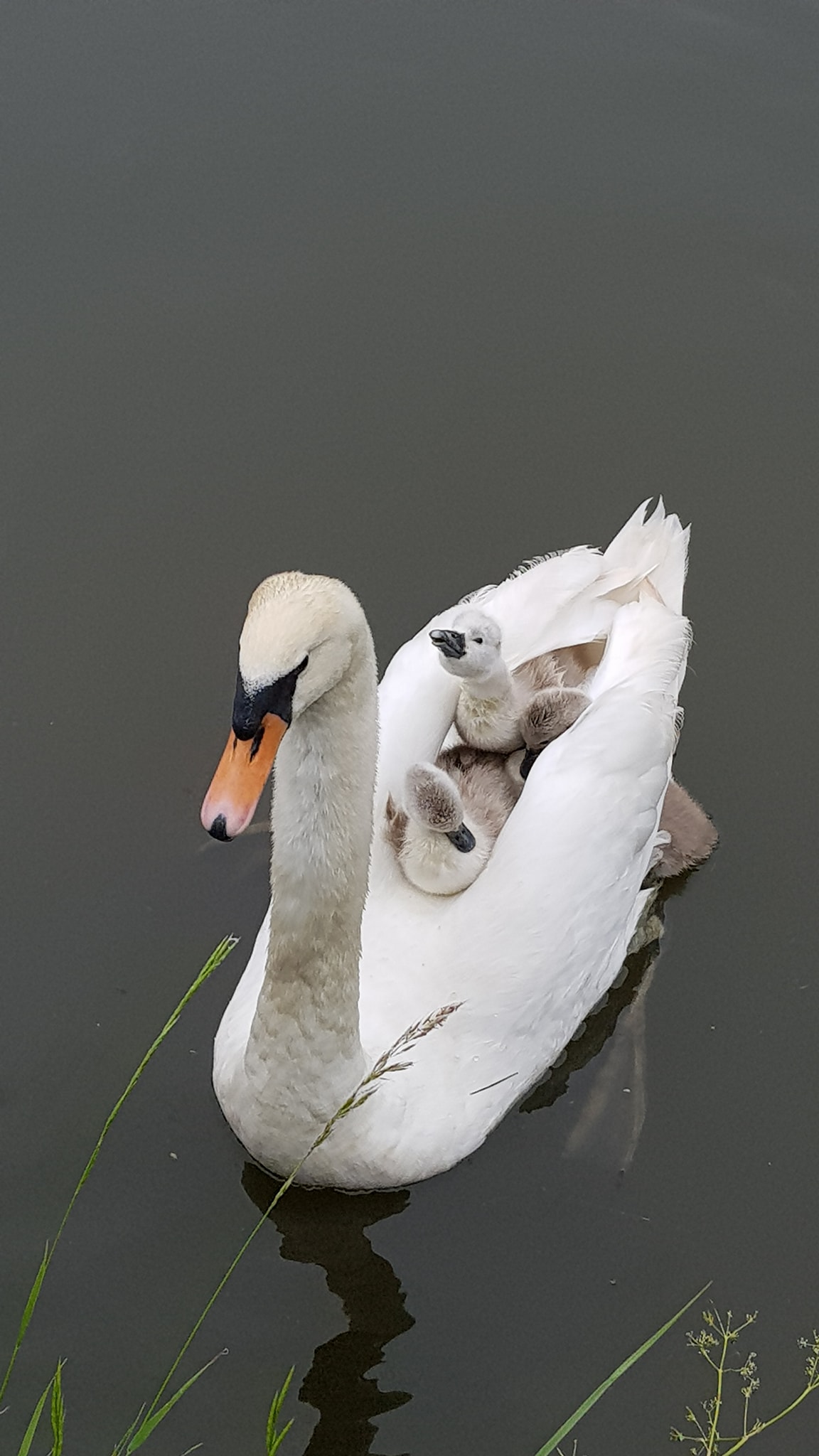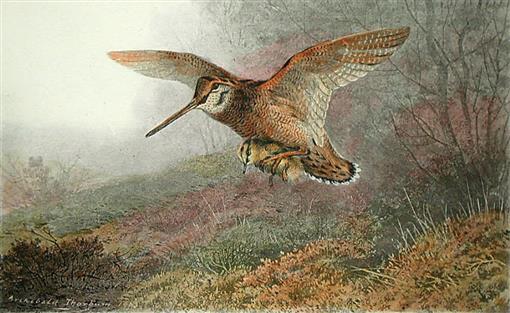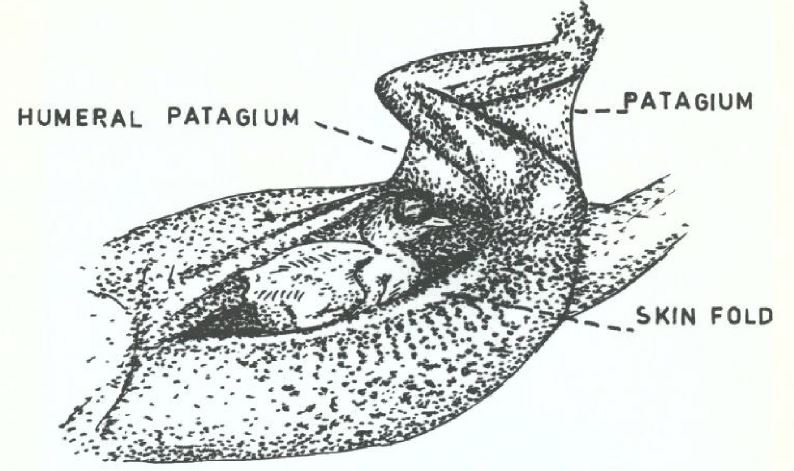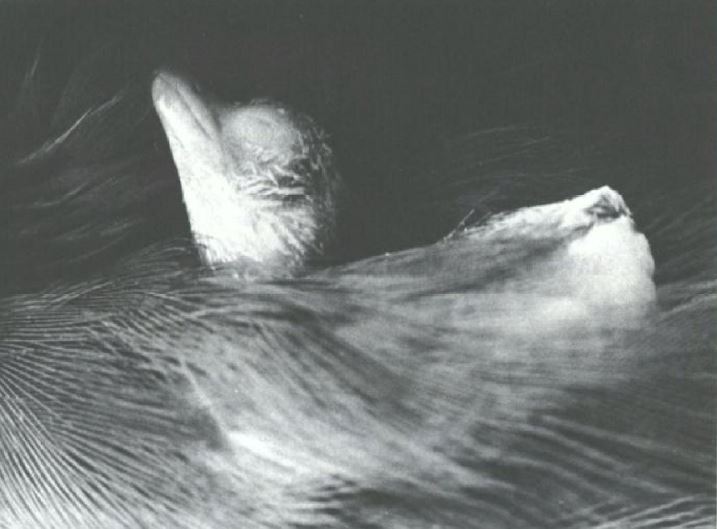 Photo: Sebastià Torrens. Question marks: Aina Bonner
Photo: Sebastià Torrens. Question marks: Aina Bonner
Solution to Challenge 5
The fifth question was a bit complicated, because there is very little documentation on the transport of young birds by air, as opposed to the transport of young by walking or swimming.
Different species transport their youngs walking. Some species carry them under the wings, others with the beak (shortly), and others on the back (shortly). Under the wings, many Charadriiformes do. For example, if you introduce “jacana carrying chicks” on the web and click on the “images” section you will see some spectacular photographs. You will also find some photographies of Charadrius, Recurvirostra,…

Actophilornis africanus carrying its young.
Photo: Willem Kruger. From: https://www.boredpanda.com/african-jacana-bird-chicks/?utm_source=google&utm_medium=organic&utm_campaign=organic
Swimming: this type of transport is done by different species of Anseriformes, Podicipediformes, etc.

Photo: https://www.facebook.com/photo/?fbid=433794175519582&set=pb.100066670085627.-2207520000
The question raised in Challenge 5 is about which species do it by flying.
The first information I had pointed to a single species, with a unique specialization: a species belonging to the Gruiformes. Nevertheless, after different answers, I explored the web, and indeed there are more species that can carry young in flight.
I have read (https://birdfact.com/articles/can-birds-pick-up-their-babies) that this type of behavior has been said to be exhibited by no less than 16 species of birds. However, it seems that some of the cases of species that have been mentioned as “airtransporters of their young” have been “disqualified” (that is, they would be unconfirmed and/or questioned reports). This seems to be the case for different species of nightjars (Caprimulgidae), that does not be confirmed that they are air carriers. The best documented cases I have found are the following six/seven:
1. First, the woodcooks (Scolopax sps., Scolopacidae, Charadriiformes) can do this. They carry them under them, as if they were hang gliders or paragliders (but flying with their beaten flight, not gliding), holding them between their legs. There are two species that have been repeatedly documented to do this: Scolopax rusticola and Scolopax minor. No photographs, but several drawings published in reputable magazines: Scientific American, The Auk, etc., as well as various publications (see below, under references). It seems really reliable.

European woodcook, Scolopax rusticola, carrying a chick. Drawn by Archibald Thorburn (1860–1935), considered one of the best bird illustrator of his time. Taken from Smith (2014), in the American Ornithological Union Centennial Commemorative Volume of The Auk.
2. Second, it seems that Actitis macularius, a New World species of wader very similar to Actitis hypoleucus, can also do this. It is also a Scolopacidae. I have found two citations, one from 1897 and the other from 1901. I have not found any illustrations. Campbell and Lack’s A Dictionary of Birds report this carrying behavior in Actitis hypoleucus, but I don’t know which of the two species it refers to (as they were previously considered under the same scientific name).
3. Observations of leg transport of young in two species of the genus Centropus (Cuculiformes; one species in Papua and the other in Africa) have also been published and it has been suggested that it also occurs in the wet Sundanese podarg (Batrachostomus cornutus, Caprimulgiformes). I don’t know if they are reliable (the last one doesn’t seem sufficiently justified to me, but… who knos). I couldn’t find any illustrations.
4. Anyway, what I wanted you to find is: Heliornis fulica. It is a gruiform included into the Heliornithidae (a family which includes 3 species; see HBW volume 2). This species is unique. It looks and dives like a grebe. It lives in Meso-America and northern South America. In 1970 the Mexican Álvarez del Toro documented its behavior and also documented that a male of this species had a pouch at the base of each wing and it could carry two chicks. It is the closest thing known among birds to the transport of young carried out by marsupial mammals!
In 1833 this behavior had already been documented by a German zoologist in Brazil. Attached is what he said:
“”Seine beiden Jungen bringt dieser Vogel in der heifsen Zeit aus, sie sind anfänglich nackt, und verbergen sich unter den Flügeln der Aeltern, wo sie sich mit dem Schnabel festhalten. Ich schofs einst im Monat December einen solchen männlichen Vogel, der unter dem Flügel ein eben ausgekommenes, noch völlig nacktes Junges trug. Sind die Jungen schon etwas stäiker, so sieht man sie beide auf dem Rücken der Mutter sitzen und selbst mit ihr untertauchen. Bemerkt dieser Vogel Gefahr und man kommt ihm zu nahe, so fliegt er auch auf, wenn er keine Junge bei sich hat, und fällt gewöhnlich bald im Schatten der dichten Gebüsche des Flufsufers wieder ein; wird er noch mehr eingeengt, so vei birgt er sich .in dem dichten Gesträuche des Ufers, geht auch gewöhnlich schnell auf das Land, um sich bis nach Vorübergang der Gefahr zu verbergen. Tauchen sieht man ihn nur im Nothfalle, besonders wenn er angeschossen ist, alsdann kann er lange unter Wasser bleiben, er erreicht indessen in der Tauchfähißkeit bei weitem nicht die Plotus und Podiceps – Arteu. Ich habe diese Vögel selbst auf den Flüssen im Inneren der Urwälder gefunden. Die Brasilianer kennen sie unter der Benennung Picapara, Margulhão (Taucher), oder Patinha d’agoa.””
Illustrations of the work of the Mexican Álvarez del Toro showing the fold of skin on the trunk, at the basis of the wings of Heliornis fulica where it carries its young:


Unlike many other ocells, Heliornis has hyper-altricial chicks (that is, chicks that are extremely underdeveloped at hatching). The eggs’s incubation only lasts 10-11 days.
Amazing, right?
Thanks to everyone who participated!!!!
References
Álvarez del Toro 1971. On the biology of the American Finfoot in southern Mexico. The Living Bird, 10: 79-88.
Anònim 1879. Natural History Notes: a singular habit of the woodcock. Scientific American, XXXX: 383.
Bartsch, 1901. Another Instance ok the Spotted Sand pipek (Actitis macularia) carrying its Young. The Osprey, 5, 9: 143-144.
Bell, H. L. 1970. Field notes on birds of Amazon Bay, Papua. Emu, 70: 23-26.
Bell, H.L. 1984. Carrying of Young in Flight by Coucals Centropus spp. Australian Birdwatcher, 10, 5: 171.
Campbell, B. i Lack, E. 1985. A dictionary of birds.
Mann, C.F. 1991. Sunda Frogmouth Batrachostomus cornutus carrying its young. Forktail, 6: 77-78.
McDermid, C.C. 1914. The Woodcock Carrying Its Young. The Auk, 31, 3: 398-399
Merrill, J.C. 1897. Spotted sandpiper removing its young Auk: 52.
Smith, K.G. 2014. 100 Years ago in the American Ornithologists’ Union. The Auk, 31, 3: 447-448.
Wied, M.A. 1833. Beiträge zur Naturgeschichte von Brasilien. Volume 4, 2: 827-828.
Wyllie, I. 1981. The Cuckoo, New York, Universe Press.
See also: https://www.birdforum.net/threads/chick-carrying-woodcocks.85913/
